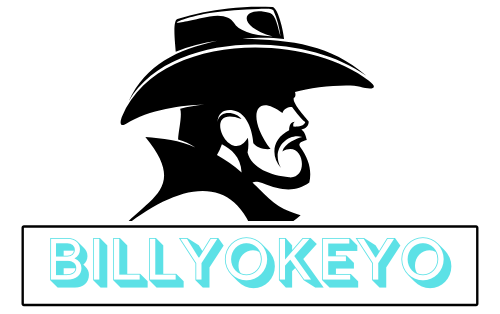The fashion world holds its breath whenever Anna Wintour makes a decision. As the legendary editor-in-chief of Vogue for over three decades, her influence extends far beyond magazine pages—she shapes trends, launches careers, and defines what the world considers beautiful. Now, whispers of an Anna Wintour archive have sparked intense curiosity among fashion enthusiasts, historians, and industry insiders alike.
This potential treasure trove represents more than just a collection of documents and photographs. It’s a comprehensive record of how fashion evolved from the late 20th century into the digital age, filtered through the lens of arguably the most powerful person in the industry. The archive promises unprecedented insights into editorial decision-making, trend forecasting, and the intricate relationships between fashion, celebrity culture, and society.
For fashion students, industry professionals, and cultural historians, Anna’s archive could unlock secrets that have remained hidden behind Vogue’s glossy facade. The anticipation surrounding this collection reflects our collective fascination with understanding how fashion history is made, one editorial decision at a time.
The Making of a Fashion Icon
Anna Wintour’s journey to becoming fashion’s most influential figure began long before she took the helm at American Vogue in 1988. Born in London in 1949, she was immersed in media culture from an early age—her father, Charles Wintour, was a prominent newspaper editor. This early exposure to editorial environments would prove instrumental in shaping her understanding of media power and influence.
Her career trajectory through various fashion publications, including British Vogue, Harper’s Bazaar, and New York Magazine, provided her with a unique perspective on both American and European fashion sensibilities. Each role contributed to her developing aesthetic and editorial philosophy, experiences that would later inform her revolutionary approach to Vogue.
When Wintour assumed control of American Vogue, she immediately began transforming the publication from a high-fashion bible into a cultural powerhouse. Her decision to feature celebrities on covers instead of traditional fashion models was initially controversial but ultimately redefined fashion magazine strategy across the industry. Under her leadership, Vogue became more than a fashion publication—it evolved into a lifestyle authority that influenced everything from politics to pop culture.
Key milestones in her tenure include the launch of Fashion’s Night Out, her role in establishing the CFDA/Vogue Fashion Fund, and her expansion into digital media platforms. These achievements demonstrate her ability to adapt traditional fashion media to changing cultural landscapes while maintaining Vogue’s position as the industry’s most respected publication.
Preserving Fashion History: Why Anna’s Archive Matters
Fashion archives serve as crucial repositories for understanding cultural evolution, social movements, and artistic expression. Unlike fine art, fashion is inherently ephemeral—trends fade, garments deteriorate, and the stories behind collections often disappear with their creators. Comprehensive archives like Anna Wintour’s preserve these narratives for future generations.
The historical significance of Wintour’s potential archive extends beyond fashion into broader cultural territory. Her editorial choices have reflected and influenced social attitudes toward body image, diversity, sustainability, and gender expression. The archive could provide researchers with concrete evidence of how these conversations evolved within fashion media over several decades.
Understanding Wintour’s impact requires examining not just what appeared in Vogue, but what didn’t make it to publication. The decision-making process behind cover selections, feature articles, and fashion spreads reveals the complex interplay between artistic vision, commercial considerations, and cultural sensitivity that defines modern fashion media.
Furthermore, the archive represents a unique perspective on globalization within the fashion industry. Wintour’s tenure coincided with fashion’s transformation from a primarily Western-centric industry to a global phenomenon incorporating influences from Asia, Africa, and Latin America. Her archive could illuminate how this shift occurred and who the key players were in facilitating these changes.
Treasures Within: What Anna’s Archive Could Contain
The scope of Anna Wintour’s potential archive spans multiple decades and encompasses various forms of media and documentation. Editorial content would likely form the backbone of the collection, including not just published issues of Vogue but also rejected layouts, alternative cover options, and early drafts of articles that never saw print.
Personal correspondence within the archive could prove particularly revealing. Letters, memos, and notes exchanged with legendary designers like Karl Lagerfeld, Marc Jacobs, and Tom Ford might shed light on the collaborative relationships that shaped iconic fashion moments. Similarly, communications with celebrities, photographers, and stylists could reveal the behind-the-scenes negotiations and creative discussions that resulted in memorable editorial features.
The photographic component of the archive would be invaluable to fashion historians and photography enthusiasts. Original contact sheets from shoots with renowned photographers like Mario Testino, Annie Leibovitz, and Steven Meisel could reveal the selection process behind iconic images. Unpublished photographs might showcase alternative creative directions or capture candid moments from high-profile fashion events.
Design sketches and prototypes from collaborations with fashion houses could provide unprecedented insight into the creative process. These materials might include early versions of garments that appeared in Vogue shoots, along with annotations and feedback that shaped their final forms. Such documentation could illuminate the collaborative relationship between editorial vision and designer creativity.
Business records, while perhaps less glamorous than creative materials, could offer fascinating insights into Vogue’s operations during Wintour’s tenure. Marketing strategies, circulation data, and partnership agreements might reveal how fashion media adapted to changing economic conditions and consumer preferences over the decades.
Unlocking Fashion’s Secrets: Potential Discoveries
Analysis of Anna’s archive could revolutionize our understanding of trend forecasting and fashion prediction. By examining patterns in editorial content across seasons and years, researchers might identify the factors that determine which trends gain mainstream acceptance and which remain confined to high fashion circles.
The archive could provide unprecedented access to editorial decision-making processes that have remained mysterious to outside observers. Understanding how cover subjects are selected, how fashion spreads are conceptualized, and how controversial topics are approached could offer valuable insights for current and future fashion media professionals.
Cultural influence documentation within the archive might reveal how Vogue has shaped perceptions of beauty standards, lifestyle aspirations, and social values. This could include evidence of how the magazine responded to criticism, adapted to changing social attitudes, and balanced artistic vision with commercial viability.
The relationship between fashion and celebrity culture could be illuminated through correspondence and planning documents related to high-profile collaborations. Understanding how these partnerships developed and evolved might provide insights into the symbiotic relationship between fashion media and entertainment industries.
Transforming Fashion Education and Industry Practice
For educational institutions, Anna’s archive could serve as an invaluable teaching resource. Fashion design students could study the evolution of silhouettes, color palettes, and textile innovations across decades of editorial content. Journalism students might analyze how fashion writing has evolved and how successful editorial strategies have adapted to changing media landscapes.
The archive’s exhibition potential extends beyond traditional fashion museums to mainstream cultural institutions. Curated displays could attract audiences interested in photography, celebrity culture, business history, and social change, broadening public appreciation for fashion’s cultural significance.
Brand collaboration opportunities emerging from the archive could include licensing agreements for reproduction rights, merchandise based on iconic editorial content, and educational partnerships with fashion schools and cultural institutions. These collaborations could help ensure the archive’s preservation while making its contents accessible to wider audiences.
Professional development applications could include workshops and seminars based on archive insights, mentorship programs informed by Wintour’s documented approaches to talent development, and case studies derived from successful editorial strategies documented within the collection.
Navigating Complex Challenges
Copyright and intellectual property considerations present significant challenges for any comprehensive fashion archive. Determining ownership rights for collaborative works, securing permissions for digital reproduction, and navigating international copyright laws could complicate efforts to make archive contents publicly accessible.
Preservation and conservation of delicate materials require specialized expertise and controlled environmental conditions. Photographs, fabrics, and paper documents from different decades may require distinct preservation approaches to prevent deterioration while maintaining accessibility for research purposes.
Digitization efforts must balance preservation needs with accessibility goals. High-resolution scanning can damage fragile materials, while lower-quality digital reproductions might not capture the detail necessary for serious academic research. Finding the optimal balance requires careful planning and substantial financial resources.
Accessibility considerations extend beyond physical preservation to include questions about who should have access to archive materials, under what conditions, and at what cost. Balancing public interest with privacy concerns and commercial considerations requires thoughtful policy development and ongoing community engagement.
The Future of Fashion History
Anna’s archive represents more than a collection of documents and artifacts—it embodies decades of fashion history filtered through one of the industry’s most influential perspectives. The potential insights contained within could reshape our understanding of how fashion trends develop, how editorial decisions influence culture, and how the industry has evolved to meet changing social expectations.
The archive’s significance extends beyond academic research to practical applications for current fashion professionals. Understanding successful strategies from the past could inform contemporary approaches to editorial content, brand partnerships, and cultural engagement. The documented evolution of fashion media could provide valuable guidance for navigating current digital transformation challenges.
Future research opportunities emerging from the archive could span disciplines from sociology and anthropology to business and art history. Interdisciplinary collaboration could yield insights that no single field of study could achieve independently, contributing to a more comprehensive understanding of fashion’s role in contemporary culture.
As fashion continues evolving in response to sustainability concerns, technological innovations, and changing consumer behaviors, Anna’s archive could provide historical context for understanding these transformations. The documented approaches to previous industry challenges might offer valuable perspectives on addressing current and future obstacles.
What aspects of Anna Wintour’s legacy are you most curious to explore? Share your thoughts on what discoveries might emerge from this potential treasure trove of fashion history, and how they might influence the industry’s future direction.
You May Also like:





